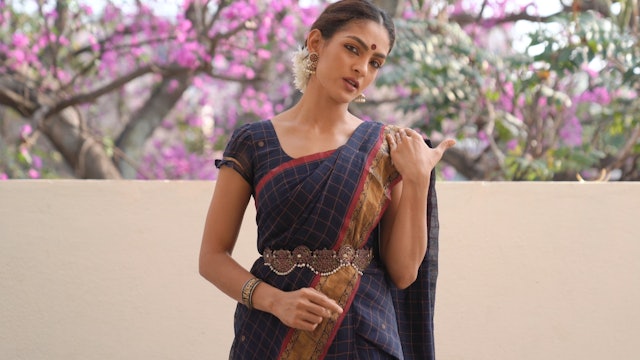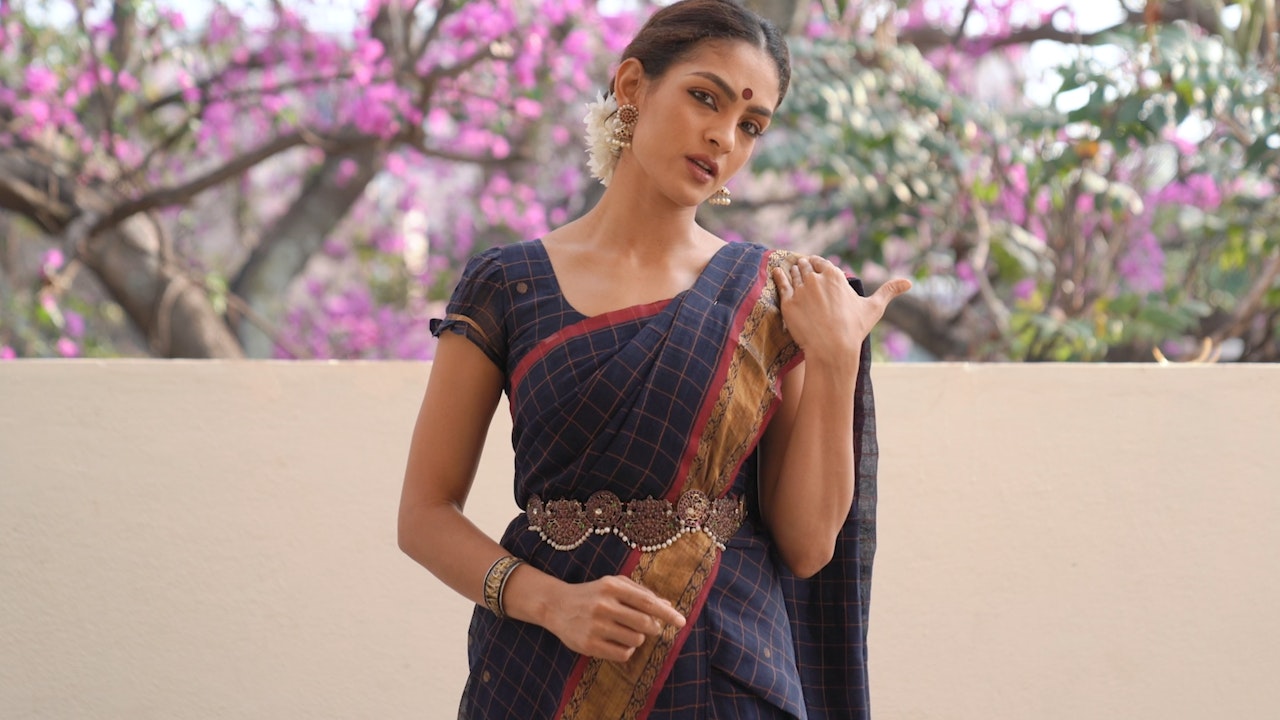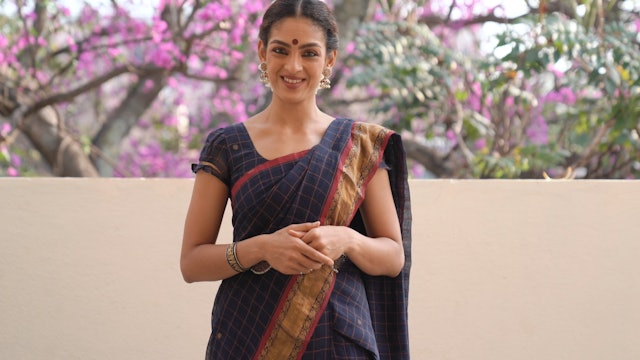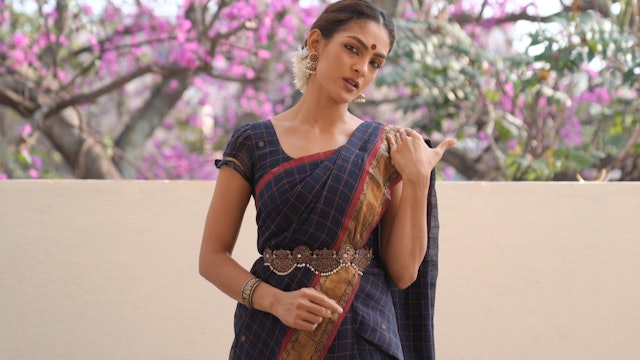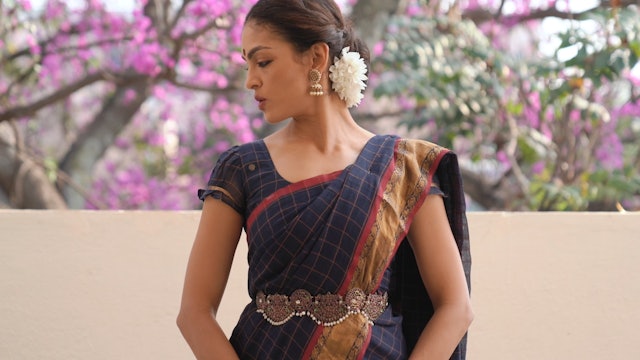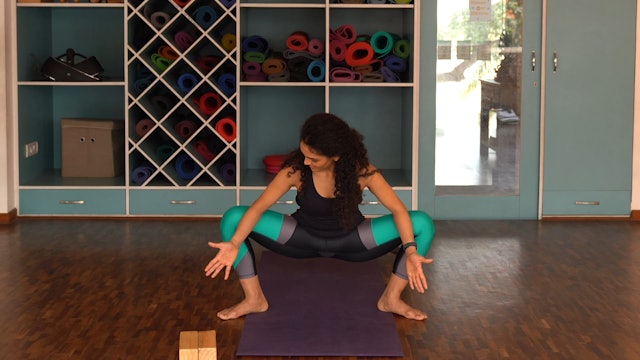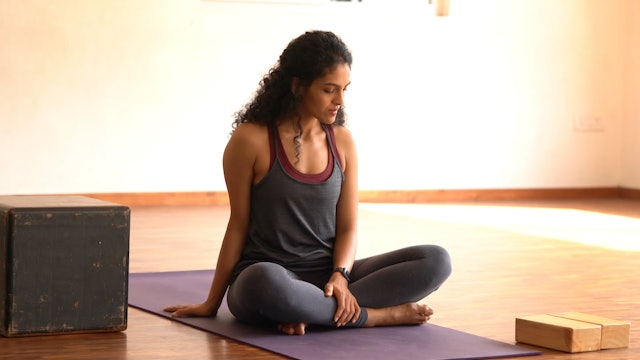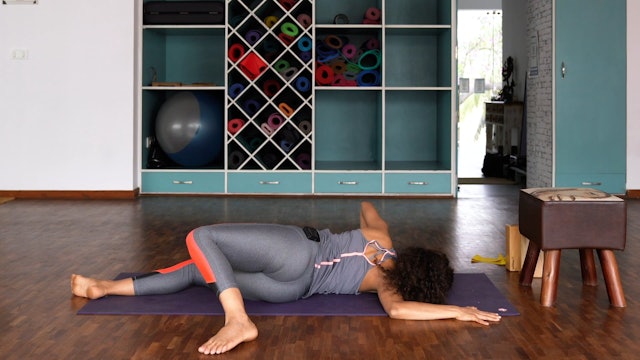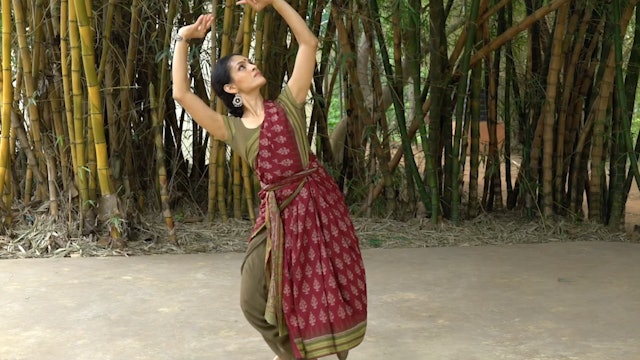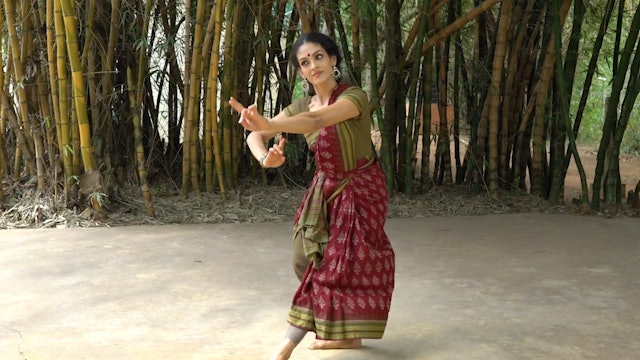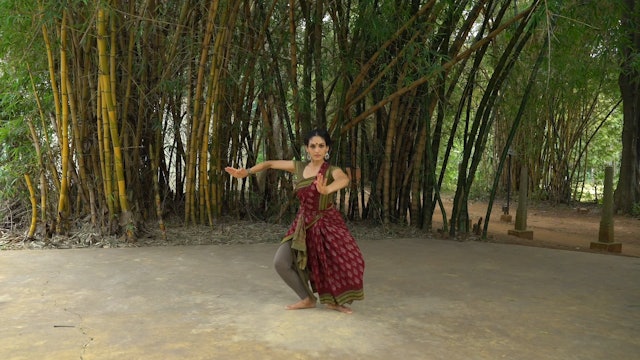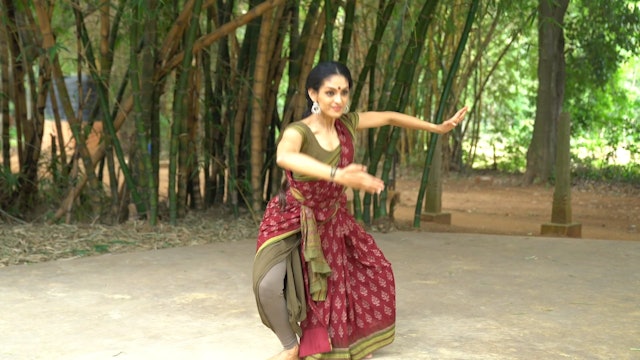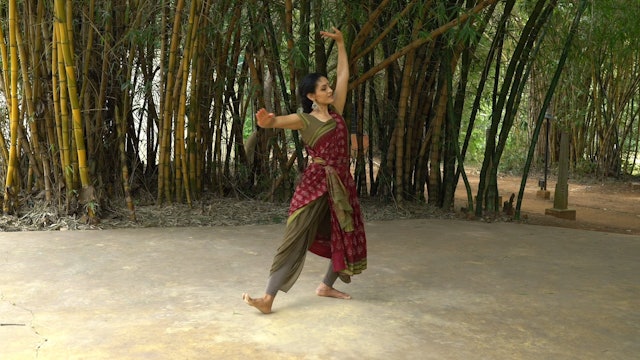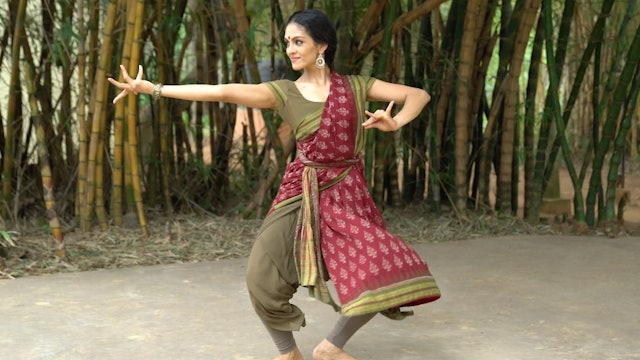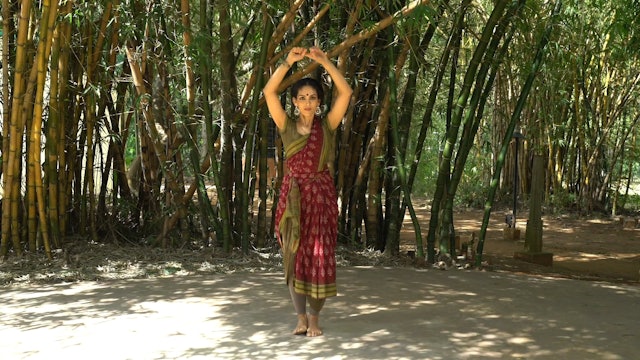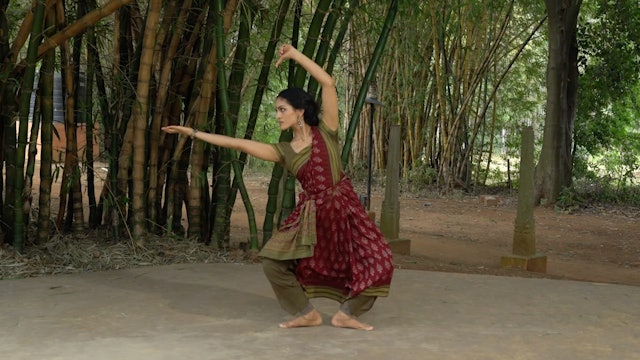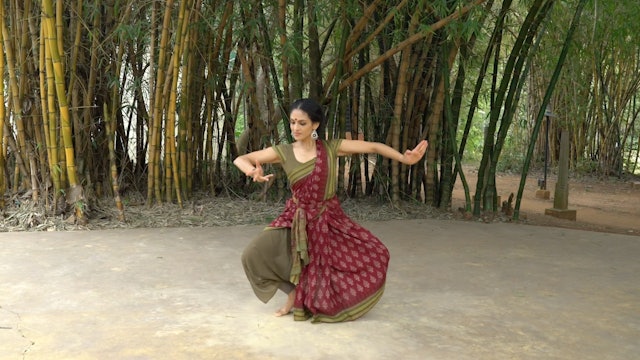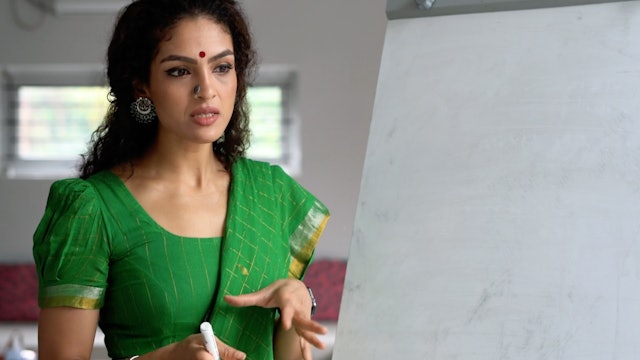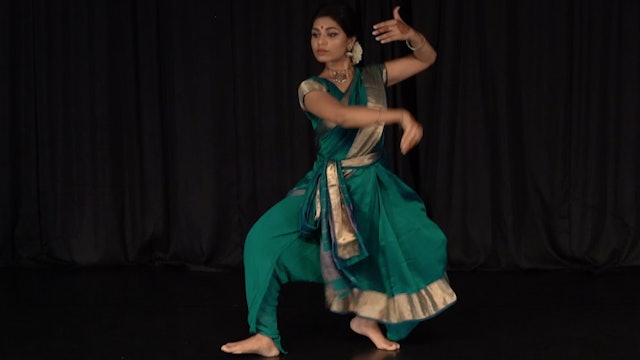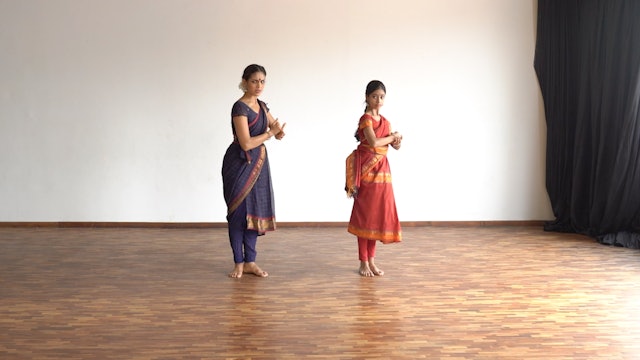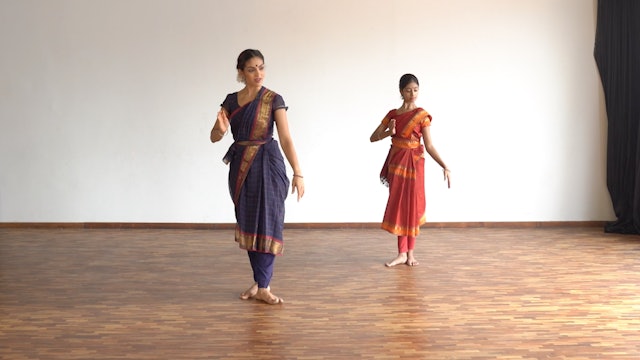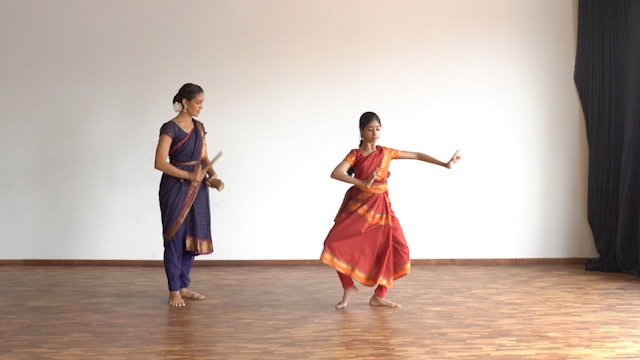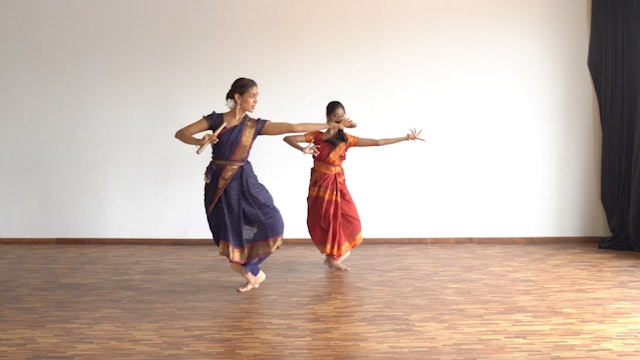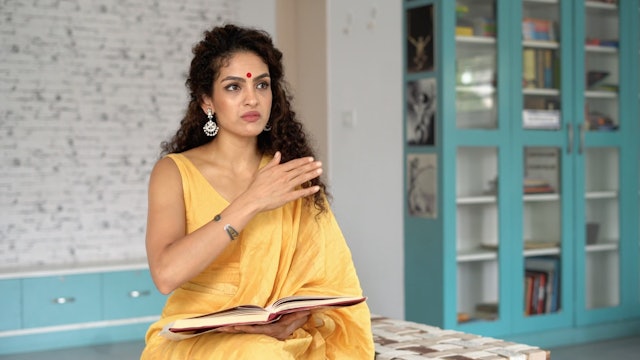-
Introduction to the Bhedas of the Natyashastra
The Bhedas as described in the Natyashastra offer detailed movement patterns for every part of the body.
A dancer who practises the Bhedas properly will have the ability to isolate and control each part of the body with purpose and clarity.
-
Shiro bheda Introduction
The head is considered one of the Angas, or major limbs according to the Natyashastra.
The movements of the head are used not only for the precise control in the execution of Nritta but also to communicate meaning in the context of gesture.
-
Shiro bheda Shloka
The head is considered one of the Angas, or major limbs according to the Natyashastra.
The movements of the head are used not only for the precise control in the execution of Nritta but also to communicate meaning in the context of gesture.
Please refer to the Shloka below for pronunciation. ...
-
Hip Openers
This series can be practiced after a basic warm up, before beginning an Adavu practice.
The hip opener series will help you navigate through tight hips. It will help you mobilise your hips and enable you to push your thighs back while sitting in Araimandi. Please do this in combination with str...
-
Legs and core 1
The first Strength regimen concentrates on two primary areas. The core and the legs. These two areas are necessary to move efficiently in a Bharatanatyam practice. The stabilisation of core muscles is necessary to move safely when dancing. This protects our back and helps with speed and clarity. ...
-
Flexibility: Shoulders & Arms
Mobility and flexibility in the arms is necessary for efficient movement to happen. When there is tightness around the arms, the movement may look restricted when dancing and you will not have proper alignment because of tightness. This video helps promote mobility in the arms and can be done alo...
-
Pakkadavu 3
Pointers for Pakkadavu 3:
Keep your shoulders down when lifting your arms.
Make sure your arms do not go too far back.
Follow your arm and keep your gaze toward the wrist of the arm you are bending away from.
Make sure you keep your thighs pushing back while retaining Swastikam in your feet.
... -
Kartharee Adavu 1
The Kartharee adavu is a movement that begins with a jump, followed by the crossing of the legs. The name could come from the hasta that is used or from the fact that the legs cross.
The bends of the bodies vary in the various types of Kartharee adavu. We usually practice this Adavu to a three ...
-
Theermana Adavu 1, variation
The Theermana or Makutadavu, is placed at the end of a Korwe or Jathi in specific rhythmic patterns, to create an ending.
The leg is either placed outstretched directly in front or at a diagonal of 45 degrees. The foot is flexed and the heel strikes the floor. In the Raadha Kalpa method we begi...
-
Theermana Adavu 2, variation
The Theermana or Makutadavu, is placed at the end of a Korwe or Jathi in specific rhythmic patterns, to create an ending.
The leg is either placed outstretched directly in front or at a diagonal of 45 degrees. The foot is flexed and the heel strikes the floor. In the Raadha Kalpa method we begi...
-
Theermana Adavu 3, variation
The Theermana or Makutadavu, is placed at the end of a Korwe or Jathi in specific rhythmic patterns, to create an ending.
The leg is either placed outstretched directly in front or at a diagonal of 45 degrees. The foot is flexed and the heel strikes the floor. In the Raadha Kalpa method we begi...
-
Paraval Adavu 1
Paraval literally means to spread. Some schools of thought also call the Paraval adavu, the 'Pakkadavu' as it moves to the side while sliding. Some others change the name based on the way the foot articulates with the floor. A few of the types of Paraval, can be referred to as Marditam adavau, as...
-
Korwe Adavu 1
The Korwe adavu is a combination of previously introduced foot and body articulations. It is called a Korvey adavu as it cannot be placed into any specific category. It has a Tattu, naatu, Bramari, Serikal amongst other movements. Some Korwe adavus also use a Kudittam in the feet.
Things to kee...
-
Korwe Adavu (utplavana 1 )
The Korwe adavu is a combination of previously introduced foot and body articulations. It is called a Korvey adavu as it cannot be placed into any specific category. It has a Tattu, naatu, Bramari, Serikal amongst other movements. Some Korwe adavus also use a Kudittam in the feet.
Things to kee...
-
Ta hata Jumtari ta Adavu
The "Ta hata jumtari ta" Adavu, is named after the syllables that are used in the practice of the Adavu. This practise is common amongst most lineages of Bharatanatyam.
The Adavu is a combination of various movements. It has the 'di, di tai" action with the Tattu and Naatu, from the muktaya ada...
-
Talam: Lecture 6, Counting Muktayams
Students of dance are often confused with the numerical value of Muktayams/ Theermanams. This lecture goes through some of the simple Shollukattus and their numerical values.
-
Pushpanjali
Pushpanjali
Raaga: Aarabhi
Aditala
Composer: Dr Balamuralikrishna
Choreography: Rukmini VijayakumarThe Pushpanjali is choreographed with many rhythmic layers. You will have an appending document that you can download to understand the Rhythm clearly.
There is an added verse from the Ganesha P...
-
Pushpanjali: Part 4
The introduction to the Pushpanjali
Raga : Aarabhi
Adi Tala
Composer : Dr BalamuralikrishnaThe Pushpanjali will be taught in parts with detailing on rhythm and alignment.
A Pushpanjali is traditionally an invocatory piece that is placed at the beginning of a Bharatanatyam performance. Push...
-
Pushpanjali: Part 5
The introduction to the Pushpanjali
Raga : Aarabhi
Adi Tala
Composer : Dr BalamuralikrishnaThe Pushpanjali will be taught in parts with detailing on rhythm and alignment.
A Pushpanjali is traditionally an invocatory piece that is placed at the beginning of a Bharatanatyam performance. Push...
-
Pushpanjali: Part 6
The introduction to the Pushpanjali
Raga : Aarabhi
Adi Tala
Composer : Dr BalamuralikrishnaThe Pushpanjali will be taught in parts with detailing on rhythm and alignment.
A Pushpanjali is traditionally an invocatory piece that is placed at the beginning of a Bharatanatyam performance. Push...
-
Pushpanjali: Part 7
The introduction to the Pushpanjali
Raga : Aarabhi
Adi Tala
Composer : Dr BalamuralikrishnaThe Pushpanjali will be taught in parts with detailing on rhythm and alignment.
A Pushpanjali is traditionally an invocatory piece that is placed at the beginning of a Bharatanatyam performance. Push...
-
Expression Series 2: Bhava & Rasa
This series of lectures deals with the art of expression that is inherent in Bharatanatyam. The lectures deconstruct the theatrical element of a performance while introducing and questioning ideas of expression.
